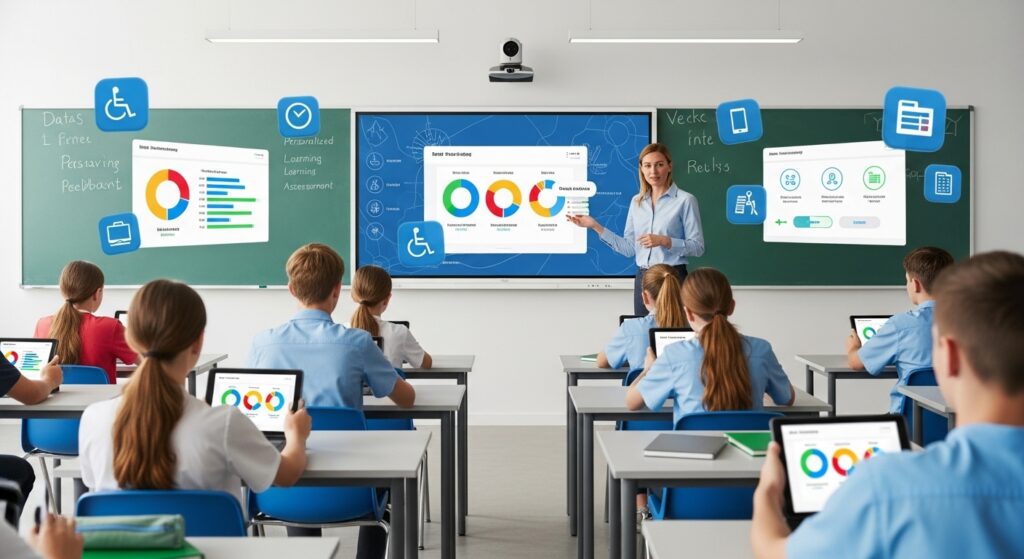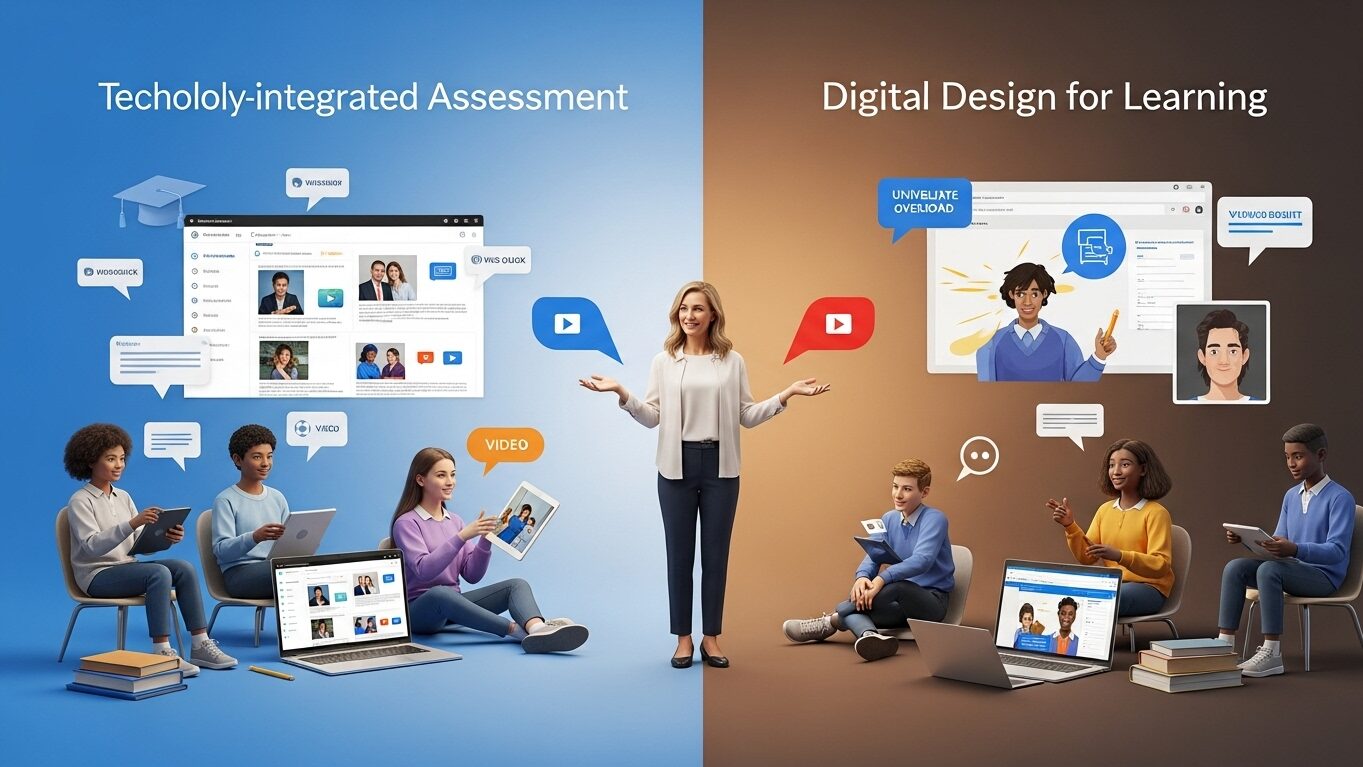Technology-Integrated Assessment
In the field of education, assessment is a very crucial part and for many years the methods of assessments have been continuously evolving. Especially in recent years, with the rise of technology, AI, and blended learning has changed the role of technology integrated assessment drastically between both how students learn and demonstrate their knowledge and how the instructors support the learners in education. While learning about the role of technology in the education field what stood out most to me was how if used effectively technology can create an assessment into a process which is interactive and student centered.
What Is Technology-Integrated Assessment?
Technology based assessment is when the instructor uses the technology such as quizzes, multimedia submissions etc to test students on their learning rather than using traditional tests. In my opinion, using technology gives students multiple ways to demonstrate their knowledge in more dynamic and personalized ways. Dr. Reeves, in his keynote regarding the challenges of online learning mentioned that the core of assessment should be authentic and completely aligned with real world dynamics and skills, which I believe digital tools achieve very effectively.
Benefits of Technology-Integrated Assessment
One of the benefits of using technology in assessments is that it opens the door to immediate feedback. For example, in one of the courses this term, there was a mid term quiz, on an online tool/website known as Brightspace, it instantly provided me with my grades, feedback on my answers which helped me to learn more deeply and understand the topic more effectively. Another benefit is that it opens up multiple ways to show learning instead of just one traditional way of testing, such as video-based submissions, blog posts etc. This factor totally aligns with the Universal Design for Learning (UDL) via multiple means of support and less barriers in learning.

Challenges and Considerations
Using technology in the education field has immense value but it also comes with hurdles. There are many challenges that still exist which negatively affects the learning process. One of the challenges is that not all students have the equal access to the right equipment, tools, or internet to participate equally and fully known as Digital Equity. Another challenge is that of Cognitive overload, with so many tools and interfaces can easily overwhelm the learners and become the means of distraction in the learning process.
Conclusion
This week I learned the benefits of effective use of technology and how we can use it to elevate the means of learning as well as teaching. It made me realise that education don’t have to a stressful process with lot fo tests and stress, but it can be engaging, interactive, and easy going with the help of technology as long as we use it carefully while eliminating the challenges one by one.
References
Reeves, T. (2006). How do you know they are learning? The importance of alignment in higher education. University of Georgia.
Recycling, R. D. &. (2024, February 8). Exploring the three Rs of waste management — Reduce, Reuse, Recycle. Rogue Disposal & Recycling. https://roguedisposal.com/resources/education/recycling/exploring-the-three-rs-of-waste-management-reduce-reuse-recycle
CAST. (2018). Universal Design for Learning Guidelines version 2.2. https://udlguidelines.cast.org/
